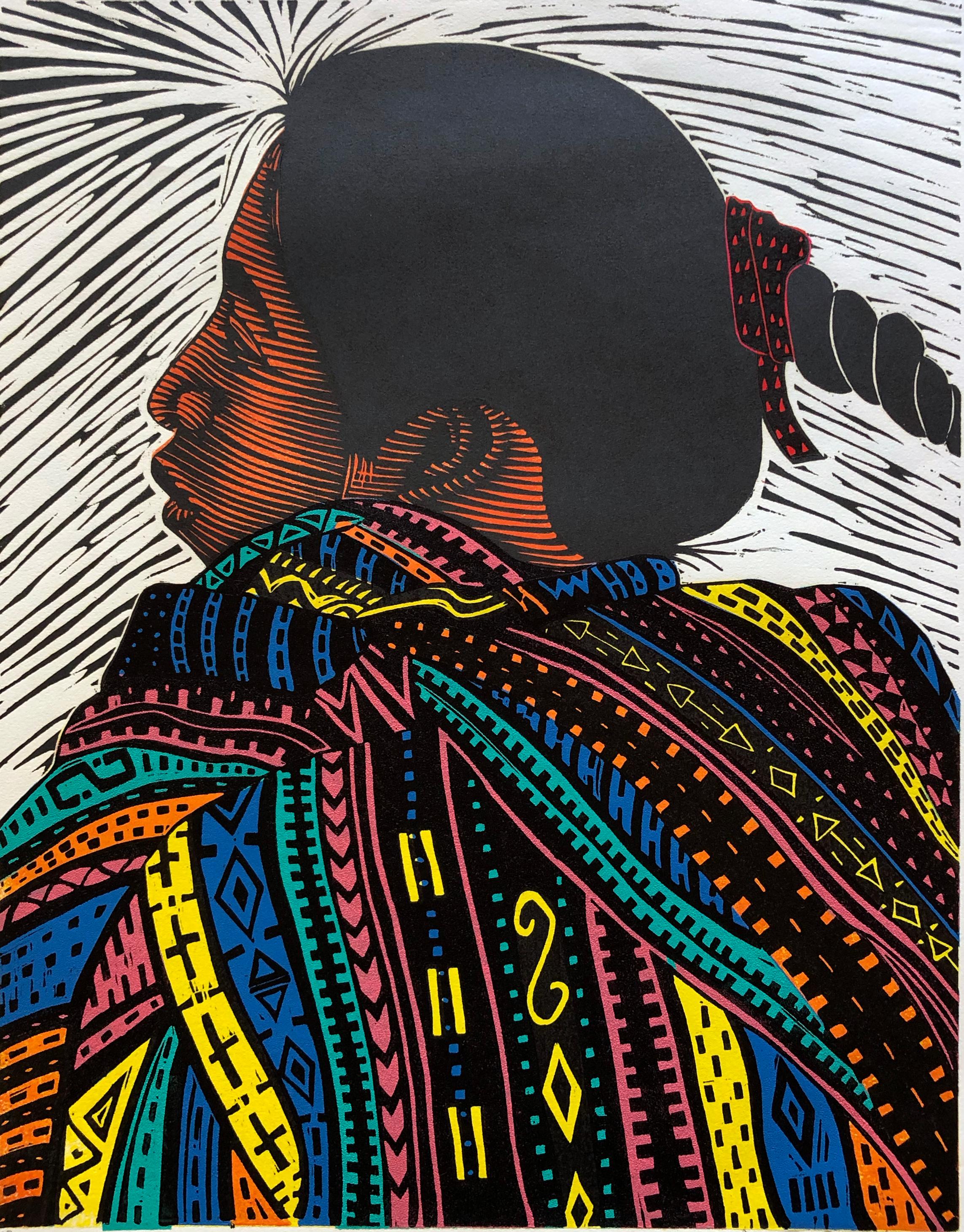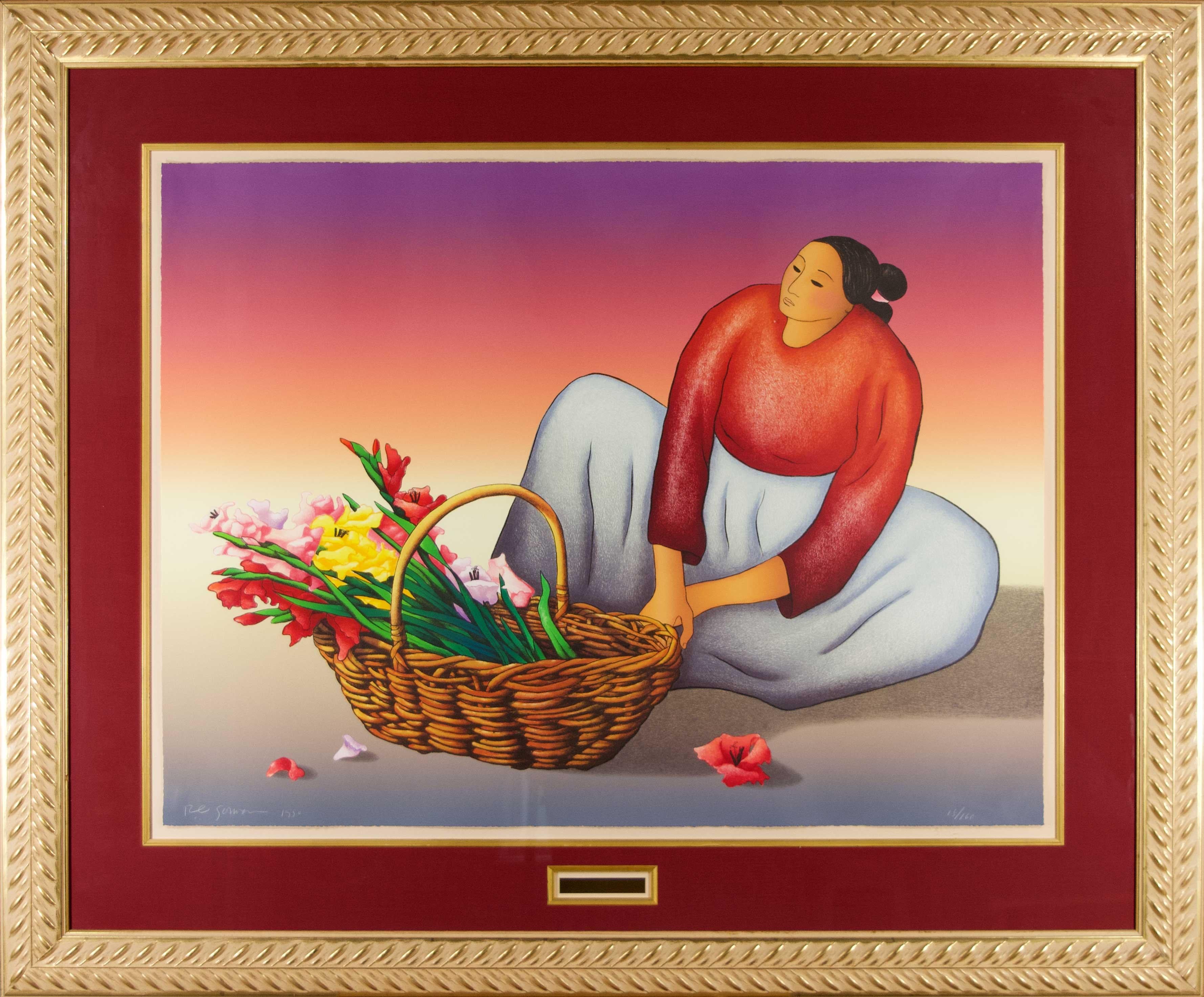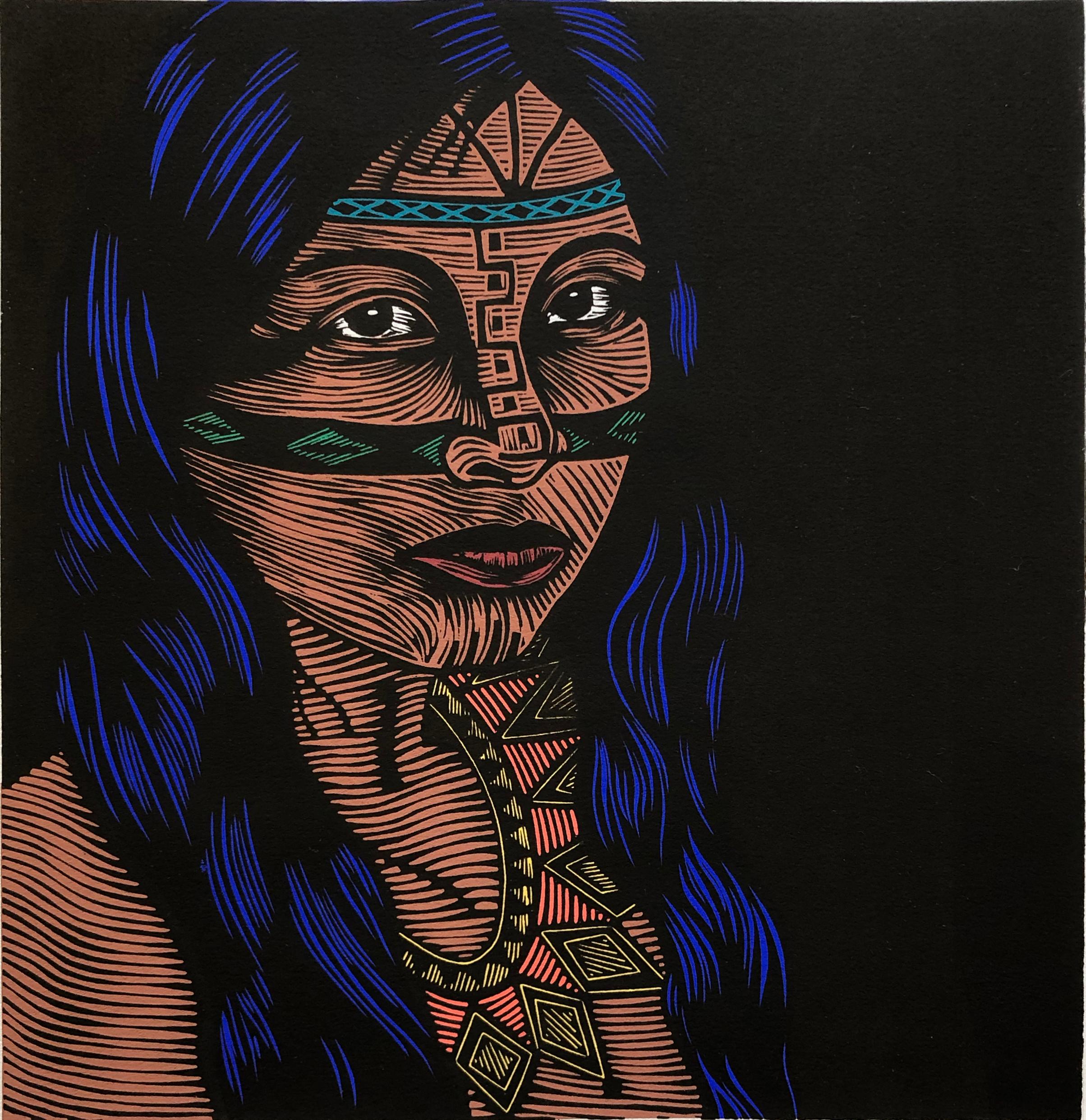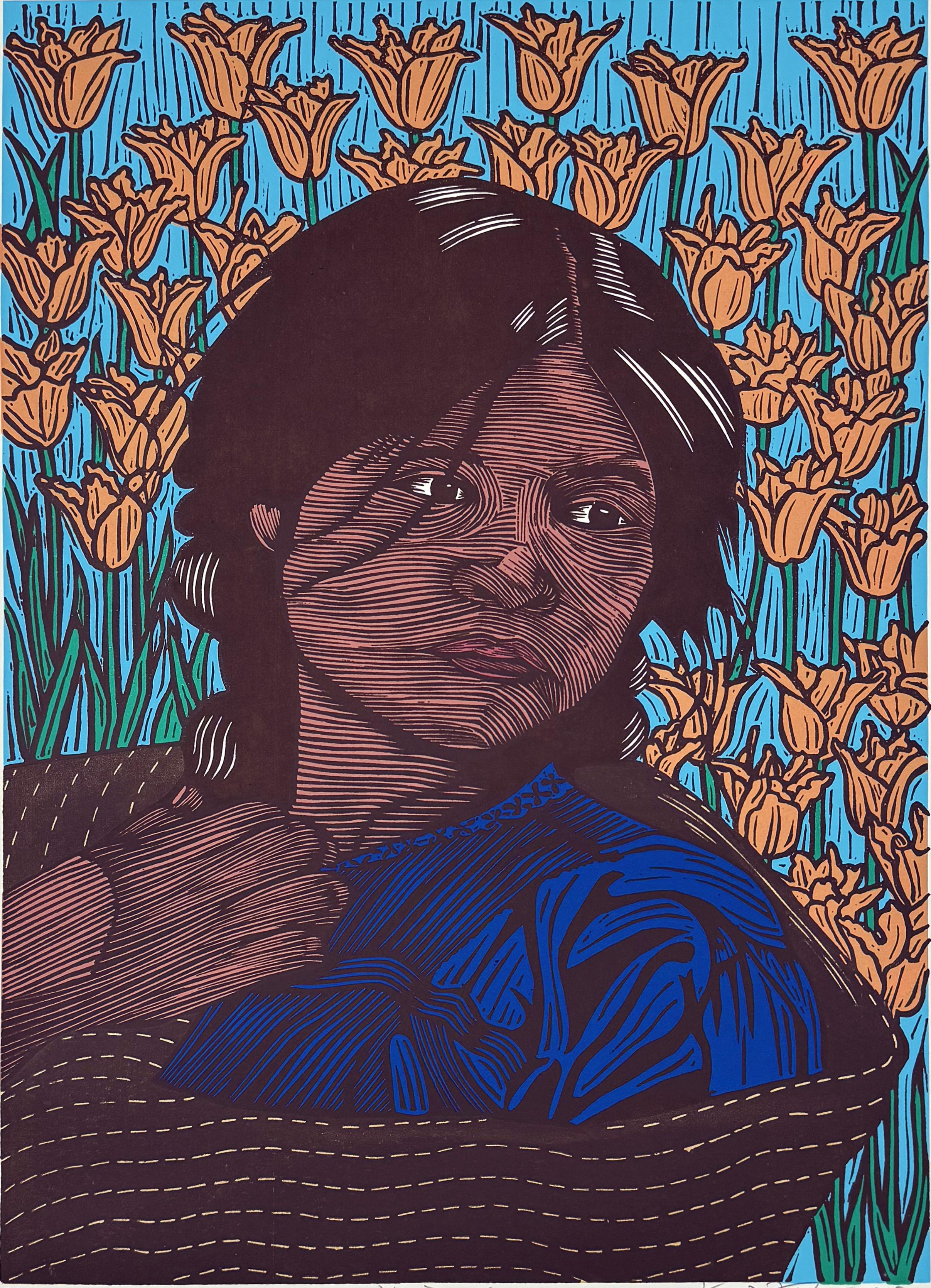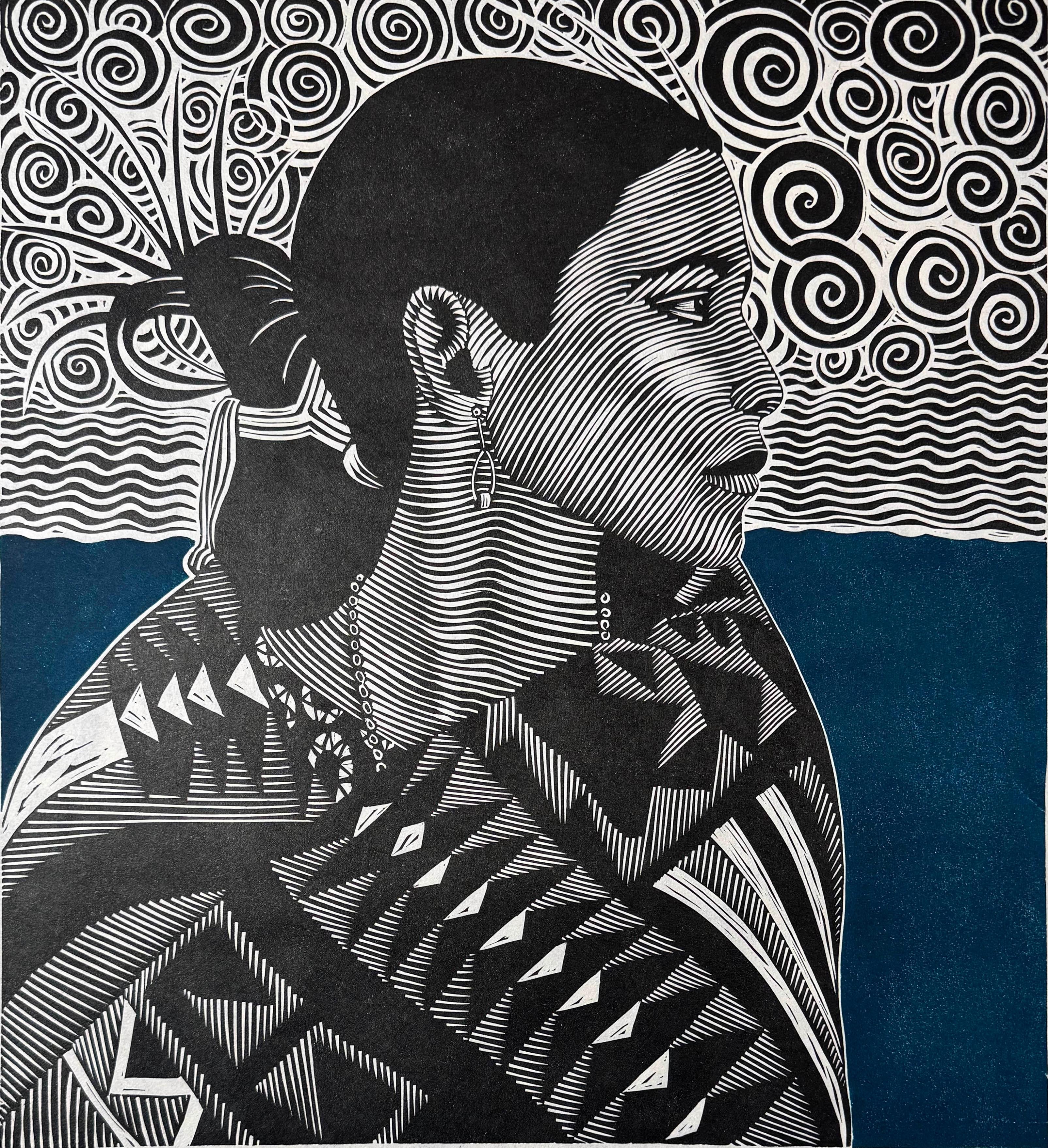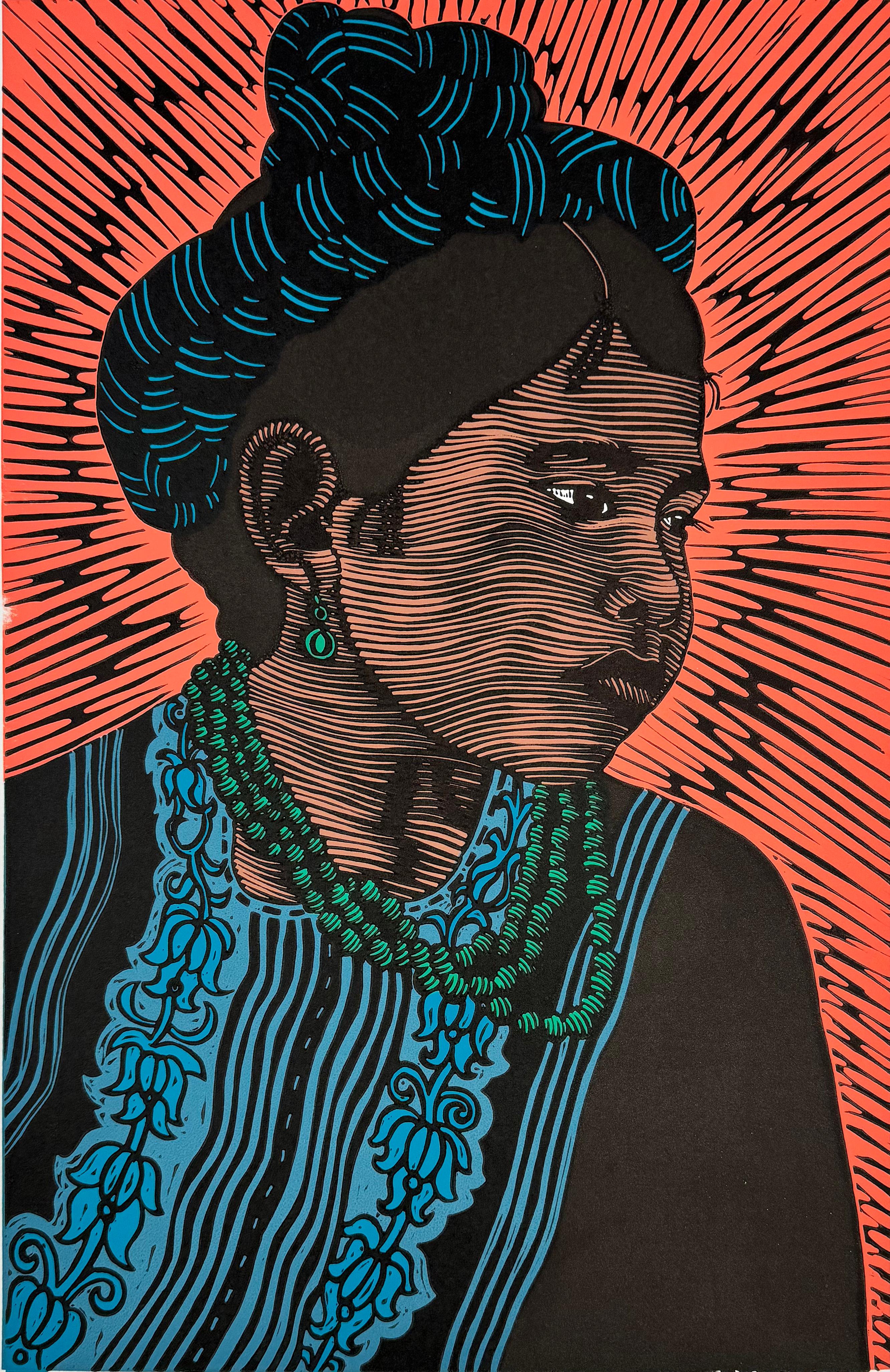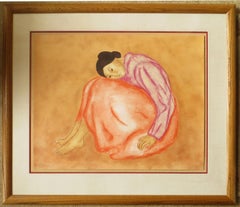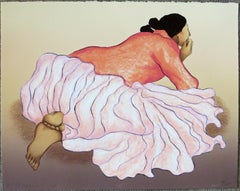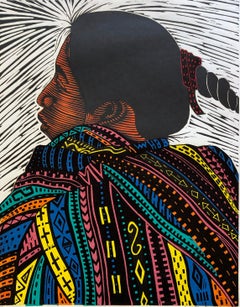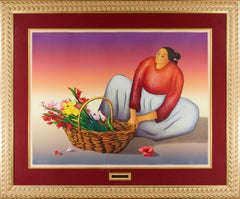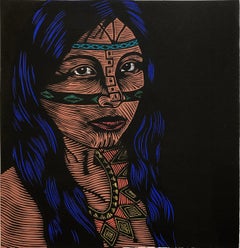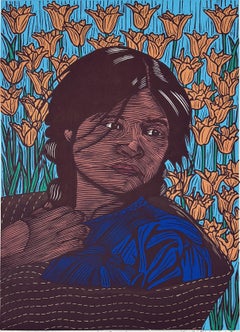Items Similar to "Liliana" Large original color serigraph
Want more images or videos?
Request additional images or videos from the seller
1 of 11
Mario Cespedes"Liliana" Large original color serigraphc.1990
c.1990
$1,000
£769.39
€879.23
CA$1,431.24
A$1,560.74
CHF 819.90
MX$18,706.40
NOK 10,397.10
SEK 9,675.49
DKK 6,566.86
About the Item
This artwork titled "Liliana" c.1990 in an original color serigraph by Bolivian artist Marion Ferrer (Mario) Cespedes, b.1942It is hand signed, titled and numbered 157/290 in pencil by the artist. The image size is 28.25 x 22 inches, sheet size is 29.85 x 25.75 inches. It is in excellent condition
About the artist:
Marion Ferrer Cespedes was born in La Paz, Bolivia on July 7, 1942. Cespedes spent the latter part of his life in San Diego. Much of his work was inspired by the Andes and Amazon River in South America.
Exh: Int'l Biennal of Sao Paulo, 1975, 1977.
Mural: Graham Library (LA).
AWARDS AND LOCATIONS
2009
Best Painting, mixed media, Indian Wells Arts Festival /Indian Wells, CA.
2000
First Place, mixed media, Southwest Arts Festival / Indio, CA.
1998
Best Painting, 11th Annual Boulder Creek Festival / Boulder Creek, CO.
1995
1st place, Southwest Arts Festival/ Indio, CA..
Award of Excellence Affair in the Gardens/ Beverly Hills, CA.
Best of Show, KPRS Arts Festival/ Las Vegas, Nevada.
1994
2nd Place, Southwest Arts Festival/ Indio, CA
Award of Excellence and purchase of a painting by The City of La Quinta
La Quinta Arts Festival/ La Quinta, CA.
1993
Best of Show La Quinta Arts Festival/ La Quinta, CA.
1985
Gold Medallion, AICA 9th Annual Western Art/ San Dimas, CA
1984
Grand Prize Winner, La Quinta Arts Festival/ La Quinta, CA.
1980,
Silver Medallion, San Bernardino County Museum/ San Bernardino, CA.
1974,
G. Medallion, Paulista Association of Fine Arts/ Sao Paulo, Brazil.
Award and right to represent Brazil in the XIII International Biennial of Sao Paulo-Brazil.
Brazilian National Biennial/ Sao Paulo, Brazil.
36th exhibition, Paulista Association of Fine Arts/ Sao Paulo, Brazil
ONE MAN SHOWS
2000
ArtExpo/ Javits Convention Center, N.Y., New York.
1996
Debora Hudgins Gallery/ Scottsdale, AZ.
Agnisiuh Gallery/ Sedona, AZ.
1990
ArtExpo./ Los Angeles Convention Center, Los Angeles, CA.
1989
Blinder Fine Arts/ Santa Monica, CA.
1987
Azevedo Gallery/ San Diego, CA.
1986
Prestige Gallery/ Palm Desert, CA.
1983
Delphine Gallery/ Santa Barbara, CA.
1981
La Tortolita Galleries/ Tucson, AZ.
1979
Vered International Gallery/ East Hampton, NY.
1975Itau Bank Art Gallery/ Sao Paulo, Brazil
1971
Kennedy Art Gallery/ Bahia, Brazil.
- Creator:Mario Cespedes (1942)
- Creation Year:c.1990
- Dimensions:Height: 29.85 in (75.82 cm)Width: 25.75 in (65.41 cm)Depth: 0.01 in (0.26 mm)
- Medium:
- Movement & Style:
- Period:
- Condition:
- Gallery Location:San Francisco, CA
- Reference Number:Seller: ces/lil/011stDibs: LU66637931252
About the Seller
5.0
Platinum Seller
Premium sellers with a 4.7+ rating and 24-hour response times
Established in 1999
1stDibs seller since 2017
864 sales on 1stDibs
Typical response time: <1 hour
- ShippingRetrieving quote...Shipping from: San Francisco, CA
- Return Policy
More From This Seller
View All"Doreen" - Large original color serigraph
By R.C. Gorman
Located in San Francisco, CA
This artwork, titled "Doreen", done in 1983, is an original color serigraph by renown Navajo artist Rudolph Carl Gorman, 1932-2005. It is hand signed and numbered E.P.I. in pencil by the artist ( E.P.I. refers to "Editions Press Impression", one of ten impressions done for the publisher.) With the blind stamp of the artist and the printer, Editions Press, San Francisco. The edition size was 150 plus proofs (a total of 45 proofs). The sheet size is 26.25 x 33.25 inches, framed size is 39.25 x 45.25 inches. Custom framed in a wooden oak frame, it is floating, with a deep red liner and with natural linen matting. The artwork is in excellent condition. The frame is in very good condition, it has minor restorations, practically invisible.
Medium: Serigraph on Paper
Dimensions: 26 1/4" x 33 1/4"
Year Produced: 1983
Edition Size: 150 plus proofs (45 proofs)
About the artist:
Born in Canyon de Chelly, Arizona and raised in a hogan on the Navajo Reservation, R.C. Gorman became one of the Southwest's best known late 20th-century artists. His signature works were Navajo women in a variety of poses. Many persons have been fascinated by the fact that he, an Indian artist, became famous in the white man's world with some calling him the "Picasso of Indian artists". Of this kind of attention, he said: "I wish people would quit pushing my being Indian. The only time I was interviewed as If I were a normal person was by the Jewish Press in Tucson. It was the first time I felt international and almost white". (Samuels 222)
His parents were Carl Nelson...
Category
Late 20th Century Realist Figurative Prints
Materials
Screen
Price Upon Request
"Silvia" Large original color lithograph
By Francisco Zúñiga
Located in San Francisco, CA
This artwork titled "Silvia" 1980 is an original colors lithograph on Wove paper by renown Costa Rican/Mexican artist Francisco Zuniga, 1912-1998. It is hand signed, dated and number...
Category
Late 20th Century Realist Figurative Prints
Materials
Lithograph
Lila
By R.C. Gorman
Located in San Francisco, CA
This artwork, "Lila" 1981 (State I) is an original lithograph on heavy paper by renowned Navajo artist Rudolph Carl (R.C.) Gorman, 1932-2005. It is signed, dated and numbered 90/150 in pencil by the artist. With the blind stamp of the artist and printer. The sheet size is 17.75 x 22.5 inches. It is in excellent condition, has never been framed, the colors are fresh and bright.
About the artist:
Born in Canyon de Chelly, Arizona and raised in a hogan on the Navajo Reservation, R.C. Gorman became one of the Southwest's best known late 20th-century artists. His signature works were Navajo women in a variety of poses. Many persons have been fascinated by the fact that he, an Indian artist, became famous in the white man's world with some calling him the "Picasso of Indian artists". Of this kind of attention, he said: "I wish people would quit pushing my being Indian. The only time I was interviewed as If I were a normal person was by the Jewish Press in Tucson. It was the first time I felt international and almost white". (Samuels 222)
His parents were Carl Nelson...
Category
Late 20th Century Realist Figurative Prints
Materials
Paper, Lithograph
$2,000
Untitled II
By Alvar Sunol Munoz-Ramos
Located in San Francisco, CA
This artwork "Untitled II" is an original color lithograph with embossing by noted Spanish artist Alvar Sunol Munoz Ramos, b.1935. It is hand signed and numbered 101/260 in pencil by...
Category
Late 20th Century Modern Figurative Prints
Materials
Lithograph
La Rosa
By R.C. Gorman
Located in San Francisco, CA
This artwork titled "La Rosa" 1984 Is an original colors lithograph on Wove paper by renown Navajo artist Rudolph Carl Gorman, 1932-2005. It is hand signed, dated and numbered 29/200 in white pencil by the artist. With the blind stamp of the Publisher/printer, Houston Fine Art Press, Houston at the lower right corner. The size is 30 x 23 inches inches. It is in excellent condition, the colors are fresh and bright, Hanging tape remaining in the back across the upper sheet, and 2 small skinned area at the lower back of the sheet. all these not visible from the front.
About the artist:
Born in Canyon de Chelly, Arizona and raised in a hogan on the Navajo Reservation, R.C. Gorman became one of the Southwest's best known late 20th-century artists. His signature works were Navajo women in a variety of poses. Many persons have been fascinated by the fact that he, an Indian artist, became famous in the white man's world with some calling him the "Picasso of Indian artists". Of this kind of attention, he said: "I wish people would quit pushing my being Indian. The only time I was interviewed as If I were a normal person was by the Jewish Press in Tucson. It was the first time I felt international and almost white". (Samuels 222)
His parents were Carl Nelson...
Category
Late 20th Century Realist Figurative Prints
Materials
Lithograph
"Madre Juchiteca" Large original color lithograph.
By Francisco Zúñiga
Located in San Francisco, CA
This artwork titled "Madre Juchiteca" 1973 is an original colors lithograph on Arches paper by renown Costa Rican/Mexican artist Francisco Zuniga, 1912-1998. It is hand signed, dated...
Category
Late 20th Century Realist Figurative Prints
Materials
Lithograph
You May Also Like
Maya, Indigenous woman in colorful traditional fabric, by Juan Fuentes
By Juan Fuentes
Located in Palm Springs, CA
Juan Fuentes’ Maya is a vibrant and dignified portrait celebrating Indigenous identity and textile tradition. Shown in profile, the figure is wrapped in an elaborately patterned garm...
Category
2010s Contemporary Figurative Prints
Materials
Woodcut
'Gladia' original lithograph in colors signed by Rudolph Carl Gorman
By R.C. Gorman
Located in Milwaukee, WI
'Gladia' is an original color lithograph by the renown printmaker R.C. Gorman. from Arizona, the artist's later works focus almost entirely on the female figure and take Native American and Southwestern imagery as a source of inspiration. Here, a single woman sits in a colorful yet undefined space. The oval shape of her broad seated form is repeated in the delicately drawn shape of the flower basket at her feet. The basket contains a bundle of multicolor gladiolus flowers...
Category
1990s Contemporary Figurative Prints
Materials
Lithograph
Micaela (color version), by Juan Fuentes
By Juan Fuentes
Located in Palm Springs, CA
Signed and titled in pencil, from the edition of 21. A young native girl with facial tattoos, member of the Ohlone, which comprises all indigenous people tracing their heritage to ...
Category
2010s Contemporary Figurative Prints
Materials
Linocut
La Reyna, by Juan Fuentes
By Juan Fuentes
Located in Palm Springs, CA
Medium: Screenprint
Year: 2025
Image Size: 18 x 12 inches
Edition size: 26
Juan Fuentes’ La Reyna is a vibrant and emotionally resonant screen print that exemplifies the artist’s co...
Category
2010s Contemporary Figurative Prints
Materials
Screen
Hermanita (Little Sister), by Juan Fuentes
By Juan Fuentes
Located in Palm Springs, CA
Medium: linocut
Year: 2025
Image Size: 17 x 16 inches
Edition of 20, marked as variation IX
Young native girl against a dark blue blue background and sky design..
As a cultural act...
Category
2010s Contemporary Portrait Prints
Materials
Linocut
Teracita, by Juan Fuentes
By Juan Fuentes
Located in Palm Springs, CA
Medium: linocut
Year: 2016
Image Size: 18 x 12 inches
Edition Size: 20
Young girl in indigenous dress and jewelry.
As a cultural activist/artist/printmaker, Juan Fuentes has dedicated his career to being part of a global movement for social change. His works address issues relating to local communities of color, social justice, and international struggles for liberation.
Fuentes' relief printing process follows closely the social realist tradition of Latin American artists such as Jose Guadalupe...
Category
2010s Contemporary Portrait Prints
Materials
Linocut
More Ways To Browse
Kennedy Bahia
Nicola Samori
Opie New York Couple 7
Pablo Picasso Foundation
Pablo Picasso La Celestine
Pablo Picasso Poster For 1980 Moma Exhibition
Pablo Picasso Raphael Et La Fornarina
Paradise 20 Dali
Parasol Howard Behrens
Patrick Nagel On Sale
Paul Iribe On Sale
Pegge Hopper
Penal Cross
Peter Doig Zermatt
Peter Forster
Peter Max 9 11
Peter Max Earth Day
Peter Max Friends
